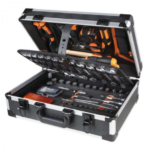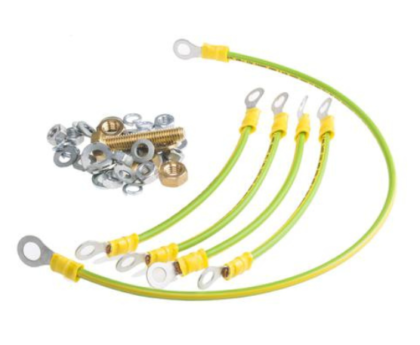Over the last century, safety protocols and technology have changed dramatically. From the initial implementation of basic safety measures in the industrial era to the advanced technological systems of the present day, there’s one tool that has remained constant: the emergency stop button. This simple mechanism, with its easily recognizable red design, has seen many forms and has evolved alongside industry needs. Let’s journey through its evolution, recognizing its significance and the advancements that have been incorporated over time.
The Birth of the E-Stop
The inception of the emergency stop button, commonly referred to as the “E-Stop”, dates back to the early days of industrialization. Factories, brimming with machinery, quickly realized the potential risks that came with these powerful tools. The E-Stop emerged as an intuitive solution to instantly halt machinery, preventing further harm or damage. Originally, these buttons were rudimentary, often directly linked to the power supply and were the last line of defense against an unforeseen event.
From Mechanical to Electronic
As technology evolved, so did the E-Stop. The rudimentary mechanical connections gradually transitioned to sophisticated electronic circuits. This not only improved the reliability of the E-Stop but also enhanced its functionality. For instance, newer systems had the capability to not just halt the machine entirely but to also bring it to a gradual stop if it was safer to do so. This evolution ensured that machinery wouldn’t just halt abruptly, potentially damaging the equipment or the products.
Integration with Advanced Monitoring Systems
With the boom of the digital age, monitoring systems became more refined. The E-Stop began to be integrated into broader safety systems that could monitor various parameters of a machine. In the event of a potential risk that wasn’t immediately visible to the human eye, these systems could trigger the E-Stop autonomously. Think of it as an extra set of eyes, always on the lookout, ensuring everything runs smoothly and safely.
Ergonomics and Design Enhancements
While the primary function of the E-Stop remained unchanged, its design and accessibility went through numerous iterations. Recognizing that in emergency situations, every second counts, designers prioritized making the button prominent and easily accessible. Its universally recognized red color, sometimes accompanied by a yellow background, ensures immediate visibility. The shape, often mushroom-like, ensures that it can be quickly pressed without the need for pinpoint accuracy, even in stressful situations.
Wireless E-Stops and the Age of Automation
With the advent of wireless technology and increased automation in industries, the E-Stop also saw its wireless avatar. In environments where it’s challenging to run physical wires or where machinery is mobile, wireless E-Stops provide the same level of safety without the constraints of being tethered. This advancement allows operators to have an emergency control even from a distance, crucial in scenarios where the machinery might be remote-controlled or when human operators need to maintain a safe distance.
Future Directions: The Smart E-Stop
Looking forward, the potential evolution of the Emergency stop button is boundless. As industries delve deeper into the realms of AI and machine learning, there’s potential for a “Smart E-Stop”. Imagine a button that learns from the environment, gauging when it’s the best time to intervene. Coupled with advanced sensors and predictive analytics, future E-Stops could potentially predict anomalies and halt machinery even before a potential threat becomes a reality.
Conclusion
From its humble beginnings in the early factories to its potential future as a smart device, the E-Stop button stands testament to the timeless necessity of safety. Its evolution reflects the changing needs and challenges of industries across the globe. While the machinery, protocols, and environments may change, the essence of the E-Stop – offering immediate safety at one’s fingertips – remains unwavering. In an era defined by rapid technological advancements, it’s reassuring to know that some things, like the commitment to safety, remain a constant priority.





